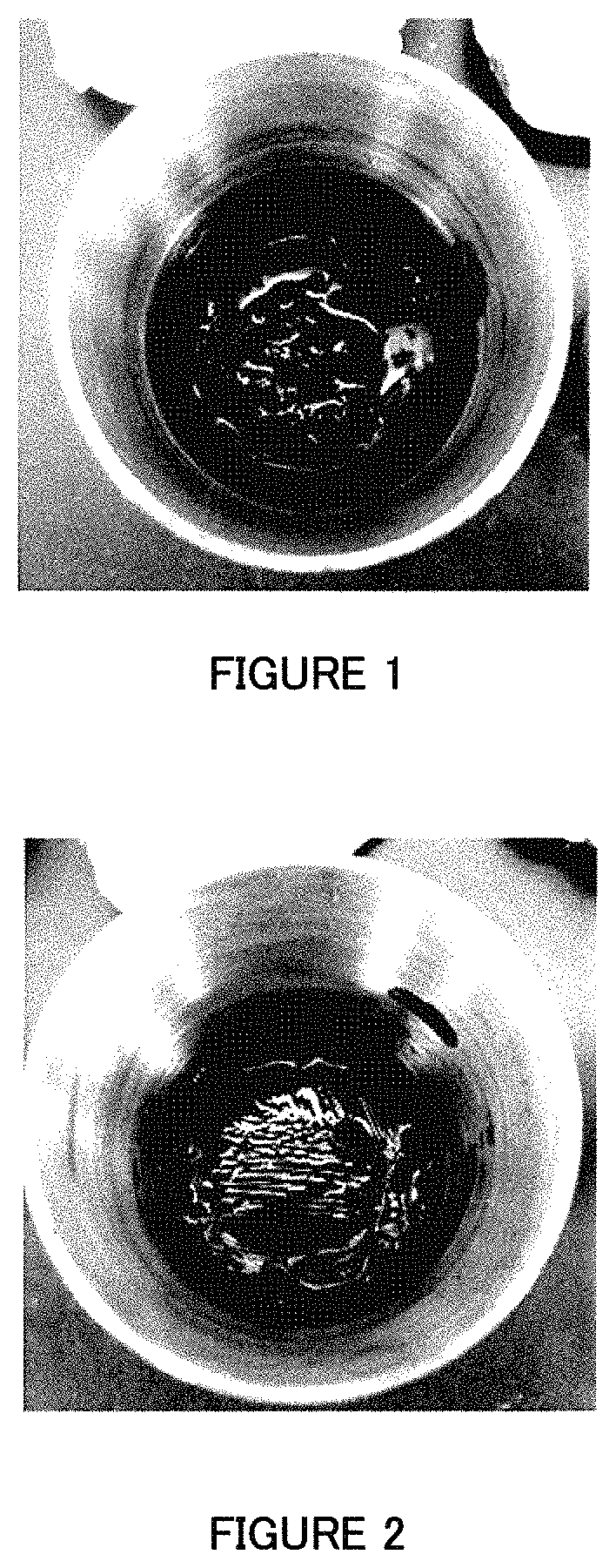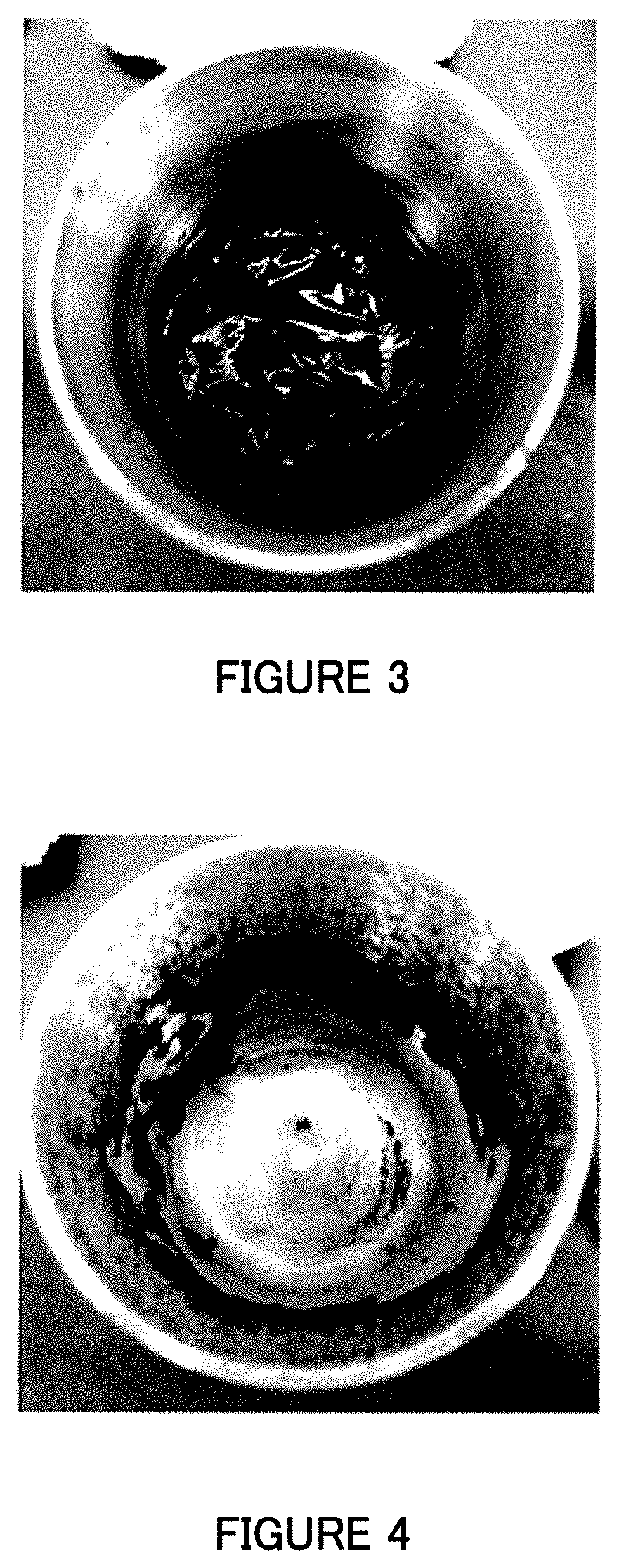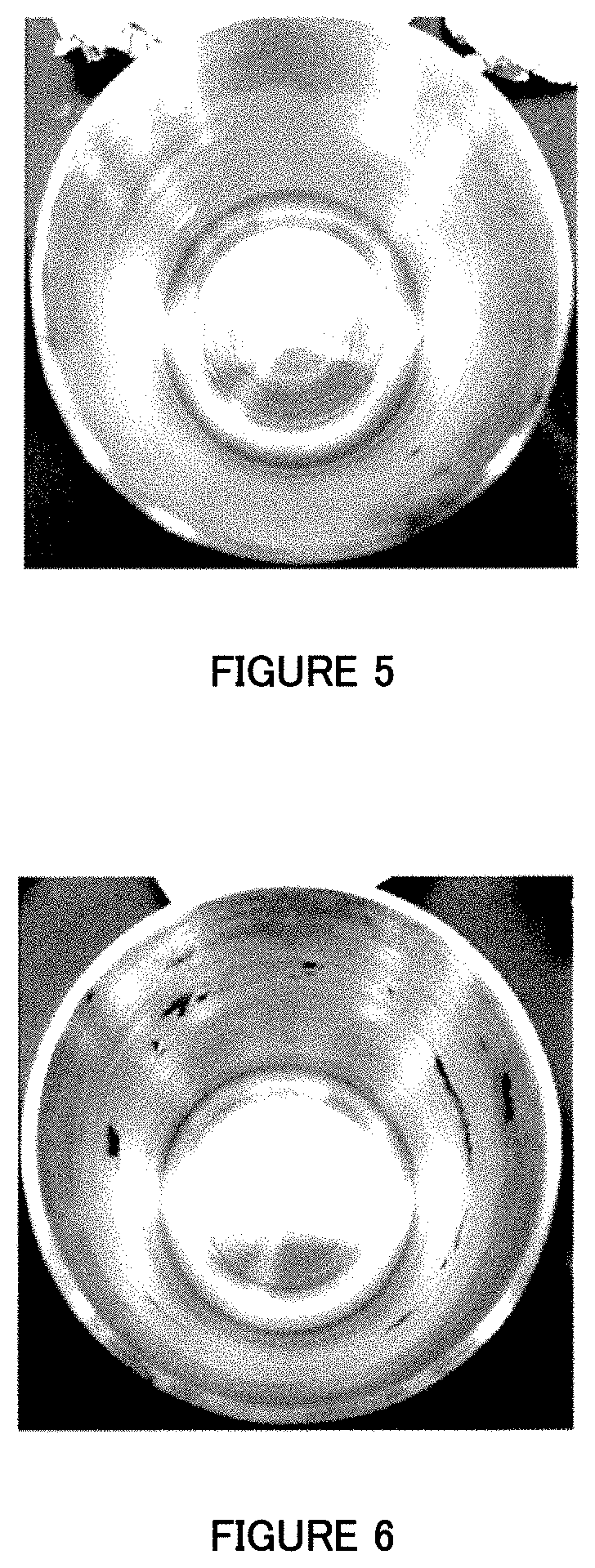Method producing for 5-hydroxymethyl-2-furfural with suppressed by-product formation
a technology of by-product formation and 5hydroxymethyl-2 furfural, which is applied in the direction of organic chemistry methods, organic chemistry, etc., can solve the problems of limited application raw material concentration, difficult continuous production, and expensiveness and difficulty in obtaining on an industrial scale, and achieves simple and inexpensive production, easy removal outside the system, and low cost.
- Summary
- Abstract
- Description
- Claims
- Application Information
AI Technical Summary
Benefits of technology
Problems solved by technology
Method used
Image
Examples
example 1
n of 5-HMF Using Agent for Suppressing the Production of Byproducts, and Analysis Thereon
(1) Preparation of Samples
[0068]In the present example, a high fructose syrup (fructose content per solid content: 95%; solid content concentration: 75.7%; product name: L-95; manufactured by Nihon Shokuhin Kako Co., Ltd.) was used as a substrate carbohydrate. The substrate carbohydrate (1.4 g (carbohydrate mass)) was put in respective reaction vessels (made of stainless steel), and activated carbon 1 (zinc chloride activated carbon) as an agent for suppressing the production of byproducts and various catalysts were added so as to attain the amounts (ratio % with respect to the solid content of the substrate carbohydrate) indicated in Table 1. In the following Examples, the amount (%) of each material to be added means the mass of each material when the mass of the solid content of the carbohydrate serving as the substrate is defined as 100%. After stirring of the respective samples, the tempera...
example 2
n of 5-HMF Using Various Activated Carbons as Agents for Suppressing the Production of Byproducts, and Analysis Thereon
(1) Preparation of Samples
[0082]In the present example, high fructose syrup (fructose content per solid content: 95%; solid content concentration: 75.7%; product name: L-95; manufactured by Nihon Shokuhin Kako Co., Ltd.) was used as a substrate carbohydrate. Pure water was added to the high fructose syrup to adjust the solid content concentration thereof to 61.4%. To 10.0 g of this solution, activated carbon was added so that the amount thereof reached 0.42 g, and mixed well. This mixed solution (about 0.7 g) was weighed out into reaction vessels (made of glass), and phosphoric acid was added thereto so as to attain the amounts indicated in Table 2. The samples were each set in an autoclave (product name: RCH-1000, HIP-7518, manufactured by Tokyo Rikakikai Co., Ltd.). The temperature of the samples was allowed to reach the temperatures indicated in Table 2, kept at ...
example 3
n of 5-HMF Using Organic Solvent (DMSO), and Analysis Thereon
(1) Preparation of Samples
[0094]In the present example, a high fructose syrup (fructose content per solid content: 95%; solid content concentration: 74.8%; product name: L-95; manufactured by Nihon Shokuhin Kako Co., Ltd.) was used as a substrate carbohydrate. Dimethyl sulfoxide (7.31 g) was added to 10.00 g of the high fructose syrup. After thorough stirring, evaporation was performed at 80° C. with an evaporator to remove water (Solution A). Thereafter, 4.00 g of Solution A was weighed out into a beaker, and well mixed with 6.00 g of dimethyl sulfoxide (Solution B). Then, about 0.5 g of Solution B was accurately weighed out into respective reaction vessels (made of glass), and activated carbon and phosphoric acid were added thereto so as to attain the amounts indicated in Table 3. The temperature of the samples was allowed to reach 150° C. in an autoclave (product name: RCH-1000, HIP-7518, manufactured by Tokyo Rikakikai...
PUM
| Property | Measurement | Unit |
|---|---|---|
| temperature | aaaaa | aaaaa |
| reaction time | aaaaa | aaaaa |
| reaction time | aaaaa | aaaaa |
Abstract
Description
Claims
Application Information
 Login to View More
Login to View More - R&D
- Intellectual Property
- Life Sciences
- Materials
- Tech Scout
- Unparalleled Data Quality
- Higher Quality Content
- 60% Fewer Hallucinations
Browse by: Latest US Patents, China's latest patents, Technical Efficacy Thesaurus, Application Domain, Technology Topic, Popular Technical Reports.
© 2025 PatSnap. All rights reserved.Legal|Privacy policy|Modern Slavery Act Transparency Statement|Sitemap|About US| Contact US: help@patsnap.com



